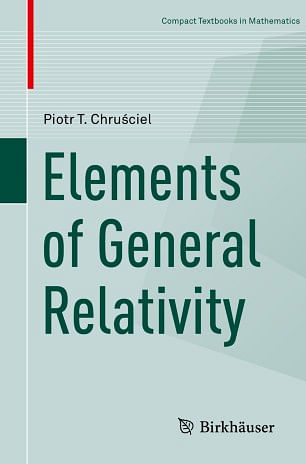The best physics books include Lost in Math, Applied Holography, Atomic Molecular Physics, Elements of General Relativity, and Physics and Metaphysics, among others. Candidates seeking the best physics books for self study must refer to these books to widen their knowledge base.
Physics is the science of matter and its movement, the science that deals with theories such as force, energy, mass, and price. As an experiential science, it aims to understand the physical world. In one form or another, physics is one of the earliest academic systems; through its contemporary subfield of astronomy, it may be the most antiquated of all.
Physics comprises a wide assortment of phenomena, all qualified physicists are familiar with the fundamental theories of established mechanics, electromagnetism, relativity, thermodynamics, and quantum mechanics. Each of these speculations has been examined in various trials and confirmed to be an authentic model of nature within its realm of validity. Given below books can be considered as the best Physics books for self study.

A contrarian claims that current physicists' infatuation with beauty has given us excellent math but poor science. Whether considering black holes or foretelling discoveries at CERN, physicists assume the best hypotheses are beautiful, natural, and sophisticated, and this standard departs accepted theories from disposable ones. This is why, Sabine Hossenfelder explains, we have not witnessed a major invention in the grounds of physics for more than four decades.
The faith in beauty has become so inevitable that it now contrasts with scientific objectivity: investigation has been inadequate to prove mindboggling theories, like supersymmetry or grand unification, developed by physicists based on aesthetic standards. Worse, these "too good to not be true" theories are truly untestable and they have abandoned the domain in a cul-de-sac. To avoid, physicists must rethink their approaches. Only by adopting reality as it is can science discover honesty.

This book introduces computer simulations using molecular dynamics methods in statistical physics, with a focus on macromolecular systems. The statistical methods are introduced in the form of computer algorithms and can be executed in computers utilizing any desired computer programming language, such as Fortran 90, C/C++, and others.
The book also demonstrates how some of these numerical techniques and their algorithms can be performed in the actual computer programming software of macromolecular systems, such as the CHARMM program. In addition, it explores a number of high-level concepts of computer simulation methods used in statistical physics as well as biological and physical practices.
Considering the molecular dynamics approach in particular to improve the reader's understanding of the use of this method in statistical physics difficulties, it also represents the equations of motion in several statistical ensembles to mimic real-world experimental situations.

This textbook is a compilation of notes based on lectures that were basically given at
IIT Madras (India) and at IFT Madrid (Spain). It is a brief and practical course on applied holography concentrating on the basic analytic and statistical methods required. The offered lectures are not designated to provide all the fundamental theoretical background, which can be located in the accessible literature, but they concentrate on solid applications of AdS/CFT to hydrodynamics, quantum chromodynamics, and dense matter.
The purpose is to accompany the reader step by step through the multiple benchmark examples with a classmate approach, rendering details for the computations and open-source numerical regulations in Mathematics, and giving simple tricks and warnings collected during the author’s research experience. At the end of this path, the reader will have all the necessary skills and tools to study more high-level techniques and produce independent research in the domain.

This book contributes an introduction to the mathematics and physics of general relativity, its primary physical concepts, its observational assumptions, and the new insights gained into the world of space-time and the formation of the universe. It presents some of the most impressive aspects of Einstein's theory of gravitation: black holes, gravitational waves, stellar models, and cosmology.
This book comprises a self-contained primer to tensor calculus and Riemannian geometry, utilizing in parallel the language of contemporary differential geometry and the correlative notation, more familiar to physicists. The author has strived to achieve mathematical rigor, with all notions given careful mathematical meaning, while trying to maintain the formalism to the minimum fit-for-purpose.
Familiarity with special relativity is assumed. The overall purpose is to communicate some of the main physical and geometrical characteristics of Einstein's theory of gravitation, giving a solid entry spot to facilitate studies of the mathematics and physics of Einstein equalizations.

This book introduces the fundamental quantum physics of atoms and molecules. Divided into three parts, the first provides a historical perspective, which drives to the up-to-date view of atomic and molecular physics, drawing the principles of non-relativistic quantum mechanics. The second section includes the physical classification of atoms and their interaction with radiation, whilst the third section deals with molecular physics.
This is the first volume of a series of three, focusing on a selected set of topics whilst also providing substantial, in-depth coverage of atomic, molecular, solid-state, and mathematical physics. The importance is given to the underlying physical data or system for each subject, and pedagogical characteristics incorporate conceptual layout parts that determine the purposes of each chapter, and interpreted but precise mathematical equipment and a meticulous discussion of approaches are used to promote the fostered physical models.

This undergraduate textbook presents a simple, brief introduction to tensor algebra and analysis, as well as specific and prevailing relativity. With plenty of examples, explanations, and exercises, it creates a well-rounded didactic syllabus that will be beneficial for any relevant course.
The book is split into three main parts, all based on lecture notes that have been strained for classroom teaching over the past two decades. Part I provides students with a comprehensive overview of tensors. Part II associates the very introductory first part and the approximately high-level third part, explaining the major intermediate-level applications of tensor analysis.
Part III contains an extended discussion of general relativity and incorporates material helpful for students intrigued essentially in quantum field theory and quantum gravity.

This book is for anyone who enjoys the creation of ideas. The author, who is enthusiastic about physical sciences, has worked to share his ideas. This book deals beyond all with philosophy, in a manageable and approachable style. The author opens by discussing his understanding of language, then stretches his thinking to multiple philosophical subjects (happiness, suicide, war, etc.), medicine, and the physical sciences.
A former student of the Louis Le Grand high school (Paris), and a doctor, Fabien Duval is vehement about physical sciences. This is his opening book, in which he attempts to share his ideas, and also especially his love for science.

The theory of relativity normally contains two interrelated theories by Albert Einstein: special relativity and general relativity. Special relativity appeals to all physical phenomena in the nonexistence of gravity. General relativity describes the law of gravitation and its association with other forces of nature. It refers to the cosmological and astrophysical field, including astronomy. The theory molded theoretical physics and astronomy when the 20th century, succeeding a 200-year-old theory of mechanics designed originally by Isaac Newton.
It introduced ideas including spacetime as a consolidated existence of space and time, relativity of simultaneity, kinematic and gravitational time expansion, and length contraction. In the realm of physics, relativity updated the science of elementary particles and their basic interactions, along with receiving in the nuclear age. With relativity, cosmology and astrophysics prophesied exceptional astronomical phenomena such as neutron stars, black holes, and gravitational waves.
It is anticipated to know the concept of matter, space, motion, time, speed, and the laws associated with each, which will help in learning the topic deeply. Thus, it gives a different opportunity to perceive a never-ending scope of physics.


















